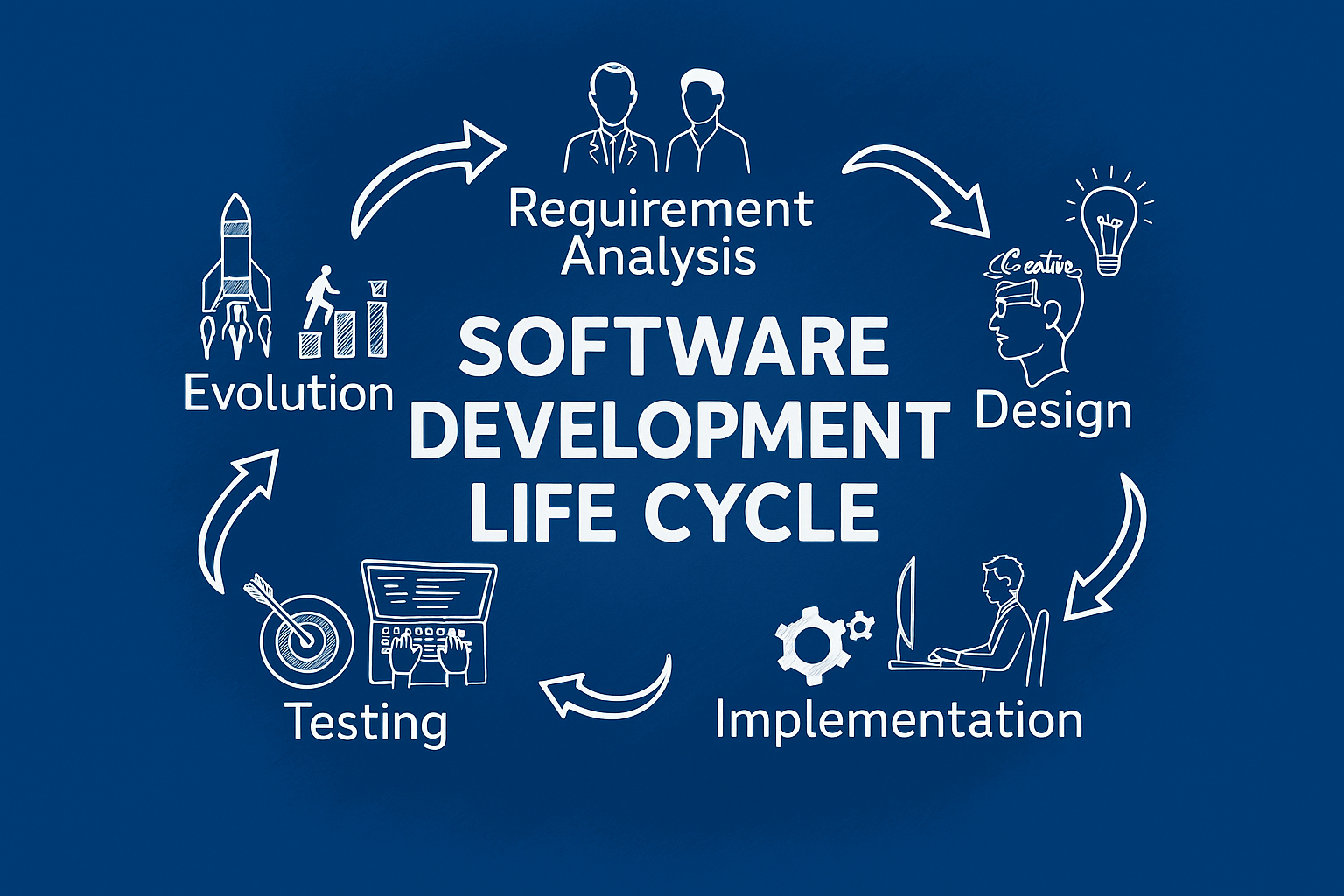The US payment processing market hit an impressive milestone in 2023, exceeding
$2 trillion, and it’s projected to grow by up to 7% over the next five years. Meanwhile, cash is becoming a thing of the past, with only 60% of businesses accepting it, according to the Federal Reserve. This transformation highlights the need for innovative, digital payment solutions.
Distributed architecture steps in as a game-changer, offering a dynamic approach to managing, processing, and storing data.
In this article, we will explore the core principles of distributed architecture, its advantages for
payment systems, and effective strategies to ensure secure, scalable, and efficient transaction processing in today’s digital landscape.
What is distributed architecture?
A distributed system is a network of independent computer programs working together to achieve a single objective. The primary goal of distributed systems is to eliminate bottlenecks and central points of failure, thereby enhancing the system’s efficiency.
This setup makes systems more scalable,
fault-tolerant, and efficient compared to traditional centralized systems.
Initially, a centralized system performs well, but as it grows in size and complexity, maintenance becomes challenging, development pace slows, and the risk of failure increases. This scenario often leads to the shift from a monolithic structure to a distributed system, typically due to the benefits of
microservices.
The ultimate goal of such a transition is to manage complexity, improve scalability, and increase resilience by breaking down the application into smaller, independently deployable services.
What are the benefits of distributed payment systems?
Distributed architecture for payment systems has many advantages over the centralized system. Below is a list of the key advantages.
Increased reliability
Distributed systems’ built-in
data replication and backup practices make them highly resilient and reliable which is a vital factor when it comes to sensitive data and user privacy.
Streamlined transactions
By using multiple nodes or computers simultaneously, distributed architecture significantly reduces the time required to validate and complete transactions. This swift processing allows companies to confirm transactions promptly, leading to higher customer satisfaction and a lower likelihood of transaction cancellations.
Boosted capacity
Distributed architecture offers critical insights into a system’s ability to manage workloads effectively. These systems can evaluate the anticipated load within seconds, contributing to efficient capacity planning and allowing for rapid decisions when it comes to scaling as necessary.
Enhanced scalability
Efficient
load balancing, reliability of payment processing architecture regardless of the data volume, and large data management capabilities are main factors that make distributed architecture ideal for scalability of payment systems. These services are critical for companies like Stripe, which has around 2 million users worldwide.
Decreased latency
Several elements influence the efficiency of your payment gateway architecture. Payments initiated in Argentina, for instance, should not be processed through servers in London. This requires access to the database to assess system response times accurately.
Minimizing latency through the use of distributed architecture is crucial for speeding up transaction processing, thereby shortening the wait time for customers during online payments.
What are the key components of distributed payment systems?
Distributed payment systems are not just a passing trend; they represent a fundamental shift in how we manage and transact money. To understand why these systems are gaining traction, let’s dive deeper into the key components that drive their popularity and growth.
1) Nodes
Nodes are the individual units a distributed architecture consists of. These can be anything from personal computers to servers and mobile devices. Each node plays a crucial role in verifying and recording transactions, ensuring the system runs smoothly.
2) Peer-to-peer networks
In decentralized systems, peer-to-peer networks enable direct interaction between nodes. This method eliminates the need for a central authority, making transactions faster and more efficient. Ripple and BitTorrent exemplify this peer-to-peer approach.
3) Blockchain technology
Think of blockchain technology as a digital ledger that records every transaction in an unchangeable chain. This technology ensures that all transactions are transparent and contribute to a secure payment system, preventing unauthorized changes.
4) Smart contracts
Smart contracts are self-executing contracts with the terms of the agreement directly written into code. On platforms like Ethereum, these contracts automate payments and enforce agreements without the need for intermediaries, reducing the potential for disputes and errors.
5) Distributed ledgers
A distributed ledger is a decentralized database where all transaction records are stored across all network nodes. This ensures that every participant has access to the same information, enhancing transparency and trust. Blockchains such as Bitcoin and Ethereum are prime examples of this technology in action.
6) Consensus protocols
Consensus protocols ensure that all nodes are aligned when it comes to the validity and order of transactions, preventing double-spending and maintaining ledger accuracy. Various mechanisms like proof of work (PoW) and proof of stake (PoS) offer different levels of security and efficiency, tailored to the needs of the system.
7) APIs and payment gateways
APIs and payment gateways are essential for ensuring different payment systems can communicate and work together seamlessly. This interoperability is vital for a connected financial ecosystem, since it contributes to a smoother system and significantly reduces disruptions.
What are effective strategies for distributed architecture implementation?
Meeting the needs of any digital business requires project-specific technical solutions. However, any robust payment system architecture relies on core practices for successful implementation.
-
Building your technology foundation
Evaluate your tech stack needs based on transaction volume and security requirements. Opt for tools that support real-time processing and can handle in-memory databases. Ensure your chosen stack is scalable to meet future demand increases.
-
Investing in team training
A well-trained team is crucial for system success. Provide comprehensive training on the technologies used, domain-specific knowledge about payment processes, regulatory requirements, and common fraud patterns.
-
Emphasizing security measures
Security is non-negotiable for payment systems due to the sensitivity of financial data. Implement end-to-end encryption to protect data, ensure compliance with local regulations and consider additional protections such as TLS and ISO 27001 standards for data security.
-
Maintaining data consistency
Consistency across all nodes in a distributed system can be challenging but is achievable. Utilize protocols like two-phase commits or vector clocks to manage data consistency. This ensures reliable data across the entire system.
Distributed systems must be resilient to individual node failures. Implementing plans for disaster recovery, backups, as well as seamless failover mechanisms are key. This approach ensures that the system remains operational despite any individual component failures.
-
Continuous monitoring and alerts
Regularly monitor key metrics such as response times, error and transaction rates. Set up automated alerts to detect unusual behavior early, allowing you to address issues before they escalate.
Conduct scalability tests as well as stress and load tests to simulate high-traffic scenarios. Identify bottlenecks, and determine when and how to scale your system effectively.
-
Implementing rate limiting
High traffic can strain payment systems. Implement rate limiting to prevent any single user from overwhelming the system. This not only protects against malicious attacks but also maintains system performance and minimizes downtime.
-
Comprehensive documentation
Robust documentation is essential for managing your system. Document everything from architecture and design decisions to operational procedures and troubleshooting guides. This ensures consistency and efficiency in system management and maintenance.
Conclusion
In this article, we explored the core principles of distributed payment system architecture, its advantages for payment systems, and effective strategies to ensure secure, scalable, and efficient transaction processing. With the rapid development of fintech startups and the evolving cryptocurrency market, embracing distributed architecture is essential for staying competitive and meeting the growing demands of modern business.
At Kanda, we understand the importance of secure and efficient implementation of distributed systems. Our experience with banking and fintech clients has equipped us with a comprehensive toolkit to deliver tailored solutions that meet your specific needs.
Are you ready to relieve pressing business issues and streamline your operations?
Contact us today to get started.




